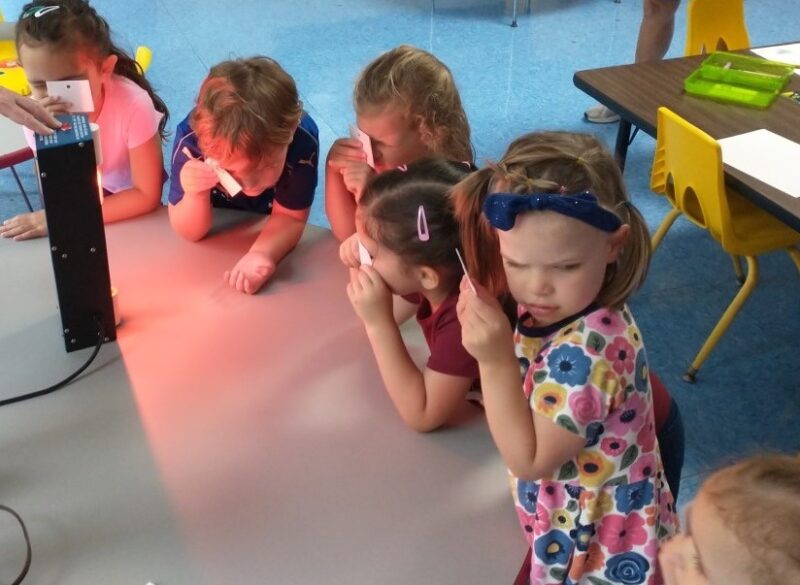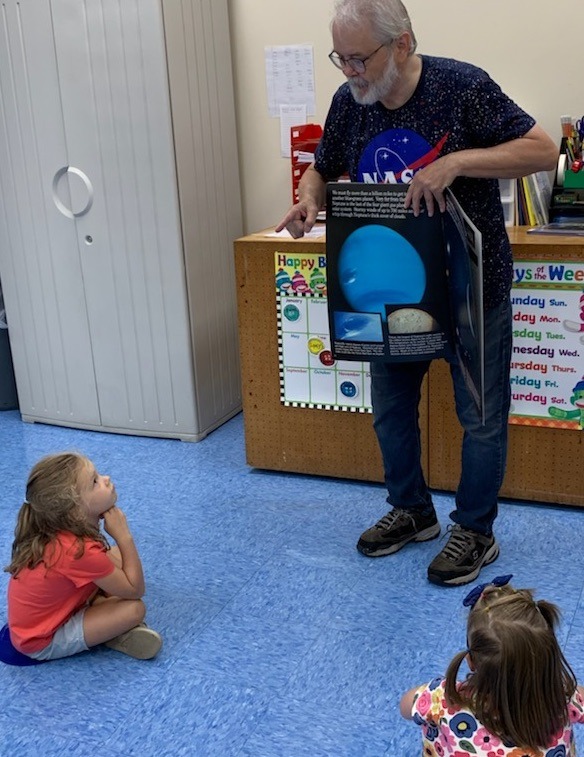Astronomy professor helped preschoolers learn about stars and planets

“It’s never too early to get kids engaged in science,” said Professor Terry Endres, after leading a group of preschoolers in a demonstration of spectroscopy.
Professor Endres– Cincinnati State astronomy instructor and the manager of Cincinnati State’s Writing Center– was invited to contribute to the Cincinnati Recreation Commission’s “Art and Nature Summer Mini Camp” program held at Westwood Town Hall on August 4.
“The idea was to show the group of 3-to-5 year olds how scientists can use light to study nature and answer scientific questions like determining the composition of stars,” Endres explained.

The demonstration for the preschool scientists was adapted from sessions for older students that Terry has offered during College activities like the ENGAGE recruiting/career exploration events.
- A spectroscope separates light into its constituent colors, producing vividly hued “fingerprints” for every element. A diffraction grating can be used to see these patterns.
- For the Mini-Camp demonstration, Terry used a set up of three emission tubes to show differences among the “fingerprints” for hydrogen, helium, and neon.
- After viewing each gas through their diffraction grating cards (photo above), the young scientists made crayon drawings of what they saw.
“Hydrogen and helium are the main gases in the Sun. Neon was just for fun,” Endres said.
After the demonstration, everyone gathered for a discussion of the solar system.
“Kids are crazy about the planets, and we had a great time talking about their favorites,” Endres said.